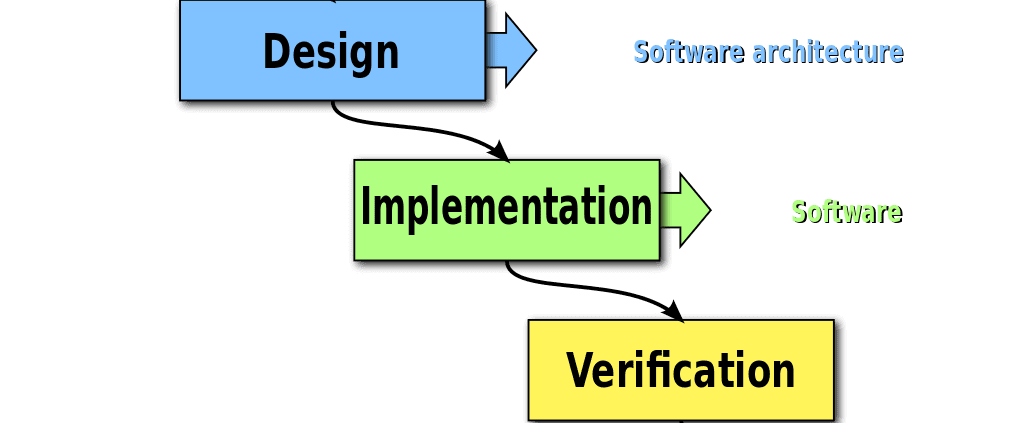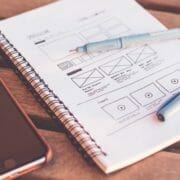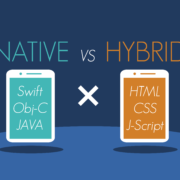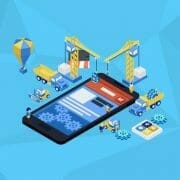The Waterfall UX Process: Everything You Need To Know
When developing mobile apps, we need to consider various project management approaches, such as the Waterfall UX process. After all, we retain users by utilizing methodologies and strategies for UI/UX that work. And we want to reduce the associated risks of creating apps via a well-thought-out Waterfall software development process.
But you may be wondering if this is the right methodology for your upcoming project or considering alternatives such as Agile. Well, we’ll shed some light on these matters and compare both methodologies below.
1. What Is The Waterfall Methodology
The Waterfall methodology is a project management paradigm initially used in construction and manufacturing but later adopted by software developers. All project tasks are split into phases that follow a linear sequence that flows downwards, similarly to a waterfall, hence the naming convention. It’s a fairly straightforward process but far more rigid than alternative models such as agile.
2. Does The Waterfall UX Process Work
Users expect modern apps to have intuitive and responsive UX. And a few ways to keep these users satisfied is by simplifying the user journey, organizing content, personalizing apps, adding biometric authentication features, and minimizing data input. But how does a development team hash out their UX process to create engaging apps? The good news is that the Waterfall methodology works incredibly well for UX, which many developers utilize.
A well-trodden Waterfall UX process works as follows:
- Initiate research and determine all core problems
- Categorize all these problems
- Generate journey maps and personas
- Hold brainstorming sessions to come up with new ideas
- Create a prototype and test it
- Begin developing the product based on the prototype
- Release the product
- Gather user feedback and return to the first phase
Overall, this process brings about satisfactory results as long as the UX isn’t updated regularly. However, many design-led mobile app developers prefer to update their UX in shorter cadences. In such a scenario, a Waterfall process isn’t the most suitable methodology. Thus, a growing number of developers utilize Lean and Agile methodologies instead.
SCHEDULE A CONSULTATION WITH AN APP DEVELOPMENT EXPERT TO GET A CUSTOMIZED QUOTE!
3. The Main Parts Of The Waterfall Software Development Process
A typical Waterfall software development process consists of either five or seven phases following a stringent linear sequence. The naming of phases may vary, but these are the commonly used descriptors:
Requirements – Project managers gather all necessary customer requirements during this initial phase. Then, without further customer input, the remaining phases in the waterfall sequence are planned out.
Design – Design consists of a logical design and a physical design phase. Logical design involves the brainstorming and theorization of solutions, while physical design necessitates the establishment of specifications based on these theories.
Implementation – The development team’s programmers start writing code based on the requirements and specifications from the above phases.
Verification – During the verification phase, the customer receives the finished product to review. The customer will then ascertain whether or not the product meets their requirements.
Maintenance – The customer regularly uses the product and gradually discovers bugs and other faults. Then, the maintenance team makes the necessary fixes based on customer feedback.
4. Pros And Cons Of Waterfall
The Waterfall software development process has several pros and cons that you should consider before commencing any upcoming projects. Unfortunately, the Waterfall model has gained an undeserved reputation among many developers nowadays. They often claim that it’s inefficient and outdated due to its rigid structure. However, it’s still widely used in enterprise, game, and mobile app development.
Waterfall’s clear structure makes it easy for developers to understand and complete tasks. And since tasks must be completed in sequence, this diminishes the possibility of unfinished and unpolished apps. Furthermore, if the developer can commit to a set release date, then it’s easy to predict the end goal and production costs.
On the flipside, Waterfall’s rigid structure makes it difficult to implement changes. Any sudden change or revision will likely derail the project and extend the time to market (TTM). Another negative is that the customer or end-user doesn’t have a say during the development process and provides valuable feedback that benefits the project. Finally, testing takes place near the end of the process, which may lead to costly and time-consuming revisions.
USE OUR APP COST CALCULATOR TO ESTIMATE THE COST TO BUILD YOUR APP!
5. Waterfall Methodology Vs Agile
Whether in the canteen or around the water cooler, it’s common for developers to engage in Waterfall methodology vs Agile debates. Since neither methodology is better than the other, it’s difficult to settle on a clear winner. However, they both have several notable differences that are worth discussing.
We’ve already gone over Waterfall’s rigid structure, which makes it difficult to implement changes. Well, Agile is the complete opposite and allows for a more iterative approach at shorter time scales. However, do keep changes to a minimum to avoid a budget overrun. After all, Agile lacks the predictability of Waterfall, making it less suitable for determining cost and time factors.
While Waterfall’s ideal for projects with clearly defined end goals, this isn’t the case for Agile. Customers are often uncertain about how a project should turn out and prefer to determine the result through trial and error. Agile’s flexible approach facilitates user feedback throughout the development process and fine-tuning the project accordingly.
6. What Projects Work Best With Waterfall
Waterfall works best for smaller projects and those that have a fixed budget, release date, and scope. It’s also a good choice for any application that doesn’t require frequent updates. And the team structure of the developer may determine if Waterfall is the way to go. For example, if contractors and remote workers will also be contributing to the project, then Waterfall’s clean and straightforward structure makes it suitable. Moreover, the customer may not have the time or inclination to follow the entire development process and only wishes to see the finished product.
7. Should You Use Waterfall And Agile Together?
It usually makes sense to deliberate over Waterfall Methodology Vs Agile, especially when embarking on mobile app development. But sometimes, depending on the project, it may be necessary to embrace both methodologies. Ideally, you’ll want to form a hybrid methodology that combines the positive aspects of both models but without any of the negative.
By implementing the Water-Scrum-Fall paradigm, it’s possible to have a hybrid methodology that works effectively. Project leaders operate within the Waterfall paradigm, but the development team functions in an Agile environment and only integrates with the Waterfall structure via the Scrum team. However, it’s challenging to run Agile and Waterfall processes concurrently. But worthwhile if you’re employing Continuous Delivery in your DevOps pipeline for your app development endeavors.
The Bottom Line
The Waterfall methodology has played a significant role in software development for many decades. It may seem outdated, especially for newer developers accustomed to an Agile environment. However, Waterfall still has its place and can be made to work with Agile if necessary. Contact us now, and find out how NS804 can help bring your mobile app ideas to life.












Leave a Reply
Want to join the discussion?Feel free to contribute!